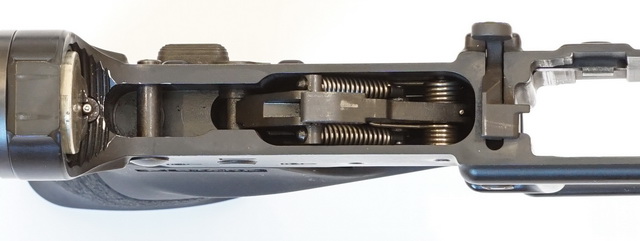As a precision shooter I’ve never found a trigger that I thought was too light. Two of my AR-15s have CMC 3.5-pound drop-in triggers, and two of them have Timney 667S 3-pound triggers.
The drawback to light triggers on the AR platform is that there is a limit to how strong the hammer spring can be. Ammunition with notoriously “hard” primers (e.g., military or Russian loads) will often fail to fire with these match triggers. I even experience occasional failures to detonate match primers (e.g., FGM205M). Timney addresses this problem by offering a heavier hammer spring, but that increases the trigger pull of their 667S to 4 pounds.
Hiperfire came out with a brilliant trigger system they call the HIPERTOUCH 24 in which the hammer pivot point is offset and supplemented with two adjustable springs so that the hammer force is lighter when it’s on the sear but heavier when it’s striking (similar to the way compound bows use cams to make the drawn weight lighter than the release weight). Now that it can be found under $200, it is my top pick for AR-15 triggers.
The result is a 3 pound trigger that hits almost as hard as a standard military trigger.
I tested this against my existing triggers to confirm their claim:
| Trigger | Pull Weight (pounds) |
Hammer Energy (inch-ounces) |
|---|---|---|
| Mil-standard | 8.5 |
18
|
| Timney Heavy | 4 |
18
|
| CMC Match | 3.5 |
11 |
| Timney Light | 3 |
10 |
| Hiperfire 24C | 3 |
16 |
Testing was done by clamping a rifle vertically and resting a teflon-wrapped rod with a hardened steel head against the firing pin hole. Pulling the trigger launched the rod vertically, and its peak height indicated the amount of energy that was transferred to it via the firing pin. Unfortunately, this is hard on the firing pins – especially the Hiperfire’s peak force which I separately measured approaching 20 pounds. This testing flattened the tips of two firing pins, which had to be retired to a farm upstate where they can run and play with all the other gun parts that can no longer do their jobs.

Terry Bender, HiperFire creator, explains the unique problems of AR triggers and how he addressed them: